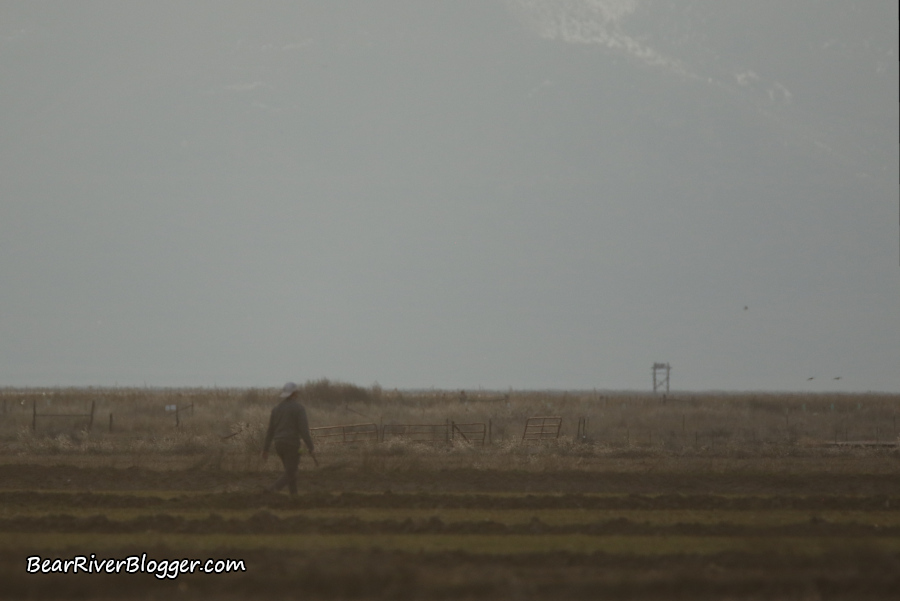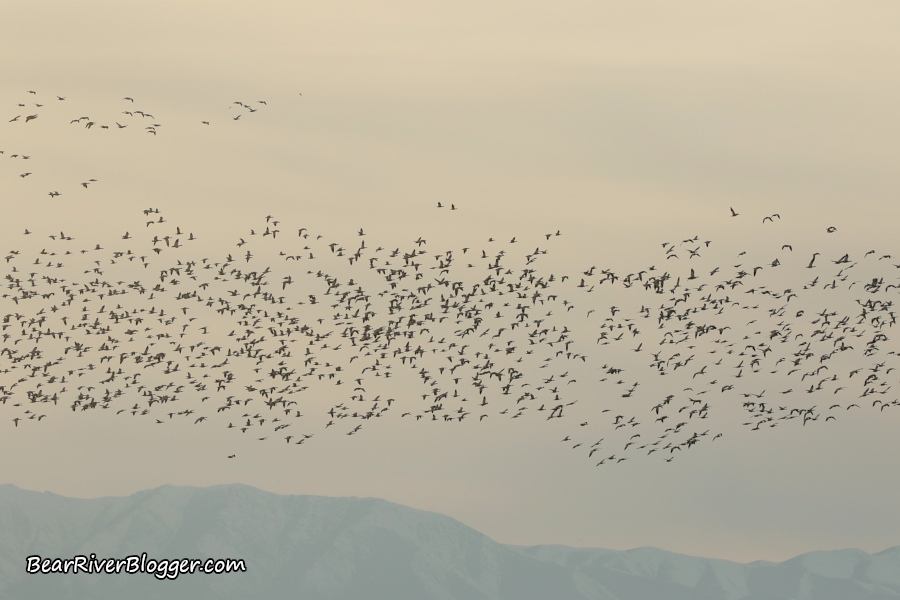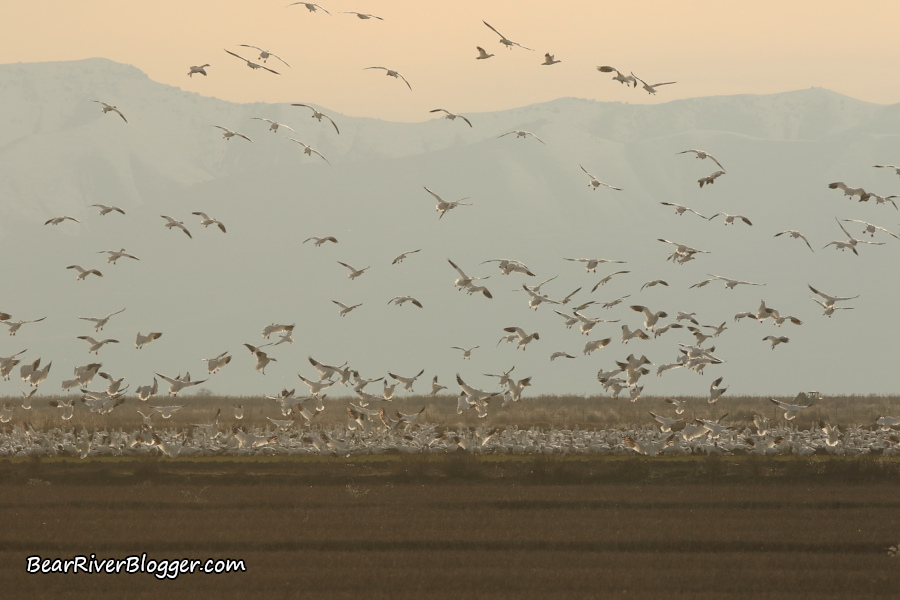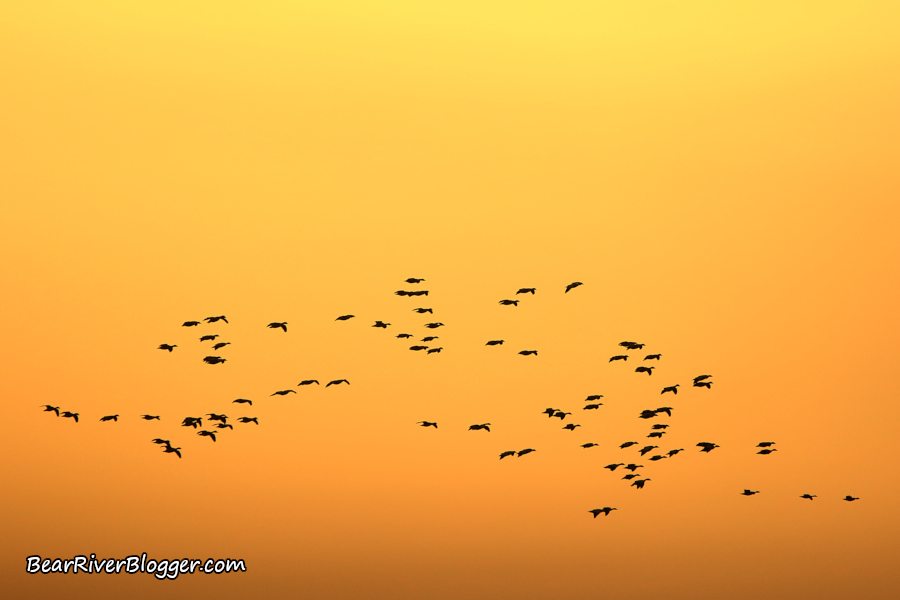Well, my fellow birdwatchers, after a long, cold winter it is starting to happen, spring is finally…, wait, let me pause here so I can say it again with gusto, ‘finally’ close enough to start knocking on the proverbial door.
The natural phenomenon of spring bird migration is what I personally refer to as my unofficial turning of the seasonal calendar, as it were, denoted by thousands of snow geese that have officially arrived in Box Elder County, Utah, namely in the small farming community of Corinne, for a few short weeks along their very long journey north.
It’s like this every year up there, a birding spectacle that cannot fully be described with words, pictures, or even video alone, (including the short photo gallery I’ve included below at the end of this article), but it can only be experienced in person to get the full effect of what thousands upon thousands of migrating snow geese look and sound like as they thunder right over your head in search of a field to land and feed in.
The snow goose migration is an annual spring miracle of nature birdwatchers and photographers like myself look forward to each year with great anticipation but, trust me, not everybody shares the same excitement about the migrating geese and I’ll get into that shortly.
Every year at this time, typically for the next several weeks or so, birdwatchers can view and photograph the geese as they leave their large, secluded wetland roost on the Bear River Club, a privately owned duck hunting club that borders the Bear River Migratory Bird Refuge, to feed on waste grain and winter wheat in the local farm fields.
This annual spectacle happens for just a few short weeks in Corinne, Utah and the numbers of snow geese, sometimes being as high as 20,000 birds in previous years, usually peak in the early or middle part of March with small flocks of snow geese arriving as soon as the middle of February, some years even sooner depending on the prevailing weather that winter.
Strangely enough, this past winter was actually an anomaly for the snow geese where, much like the tundra swans on the nearby Bear River Migratory Bird Refuge auto tour route, a small but modest flock of southbound birds stayed through the unusually mild winter season, halting their fall migration for some unknown reason and remaining here in northern Utah until the urge to return to their northern breeding grounds for the summer breeding season is once again rekindled with increasing daylight hours and warmer temperatures.
(Thousands of Snow Geese Arrive In Utah. For short nature photography tips and interesting stories about the natural world around us, subscribe to our Bear River Blogger channel on YouTube for videos and updates from our travels while out in nature, both on and off of the famed Bear River Migratory Bird Refuge.)
Also similar to the large tundra swan congregation on the nearby federal bird refuge that, interestingly enough, shares their same general migration time frame, the arctic tundra is where these snow geese are headed, the far northernmost coastline regions of Alaska and Canada so they can breed another family of geese that will start the annual miracle of migration all over again in the fall.
The snow geese typically feed every morning and evening while they are here, taking flight from the Bear River Club wetlands to fly out to the farm fields of Corinne twice daily, both early morning and late evening, in very large flocks that continually fill the sky with hundreds of birds at a time, sometimes for almost an hour or more, as they all flock to and eventually congregate in the chosen waste grain or winter wheat field to feed in.
And that, my friends, is where the problem arises, and why not everybody is equally excited to see the migrating snow geese.
Each autumn, many of the farmers in Corinne plant winter wheat, a type of grain that germinates and starts to emerge in the fall where by springtime it will have grown several inches or more, looking a lot like a nice plush urban lawn of sorts.
Snow geese love feasting on these newly emerging winter wheat shoots, pulling them up root and all when they feed, and with thousands of birds foraging in a single field it doesn’t take more than a few days before that winter wheat crop is literally decimated by the large, ravenous flock of snow geese and nothing but a barren field is left in its wake if the geese aren’t immediately chased off and kept away.
For decades, biologists have said the same thing is happening to the arctic tundra with too many geese arriving and plucking the vegetation from the frail permafrost landscape, leaving the slow-growing tundra in a state of disrepair for decades or more to come, if it can even recover at all from the vast overpopulation of snow geese voraciously feeding on the fragile tundra vegetation.
These two reasons are why there is, in fact, a spring snow goose hunt, not just here in Utah but nationwide, to help mediate the crop damage on winter wheat as the birds migrate north and also to bring down the overall snow goose population in an effort of reducing the stress on their arctic breeding grounds.
Simply put, the snow geese are literally eating themselves out of house and home on the arctic tundra and causing quite extensive agricultural damage as they migrate back north in the spring.
I truly understand and empathize with the affected farmers as I have seen firsthand the damage this large flock of snow geese causes each year.
Seeing so many birds together like this is still quite an awesome spectacle to behold from a birdwatching and photography perspective, but, however, there is another side to it, sometimes a costly side, that most people aren’t aware of when viewing, photographing, and enjoying these birds in the spring.

The best way to find the snow geese in Corinne is to head south on 6800 West for a couple of miles, park, and look westward, waiting for the large flocks of geese to take flight from the large wetland and then follow them in whichever direction they take to head out and feed.
Those directions will approximately put a person due east of the large, private wetland the snow geese roost on during the day but once the birds are in the air the usually quite large and numerous flocks of geese are fairly easy to see and follow from 6800 west.
Sometimes the geese land in a farm field nowhere near a public road, making viewing and photographing them nearly impossible, but other times I have literally seen them 50 yards from the roadway so it’s just up to the geese on which field they want to feed in that results in how good of a view people can get.
All of the land and farm fields in Corinne are privately owned and should be respected as such but once the spring snow goose hunt is over, ending on March 10, 2024, for this year’s hunt, the geese settle down and seem to be more apt to use fields closer to the roadway from what I have seen over the years.
Despite the increasing clouds yesterday afternoon, I had the urge to try and photograph the snow geese so I headed out with my camera at the ready, hoping they would pick a field to feed in that was somewhat near the road.
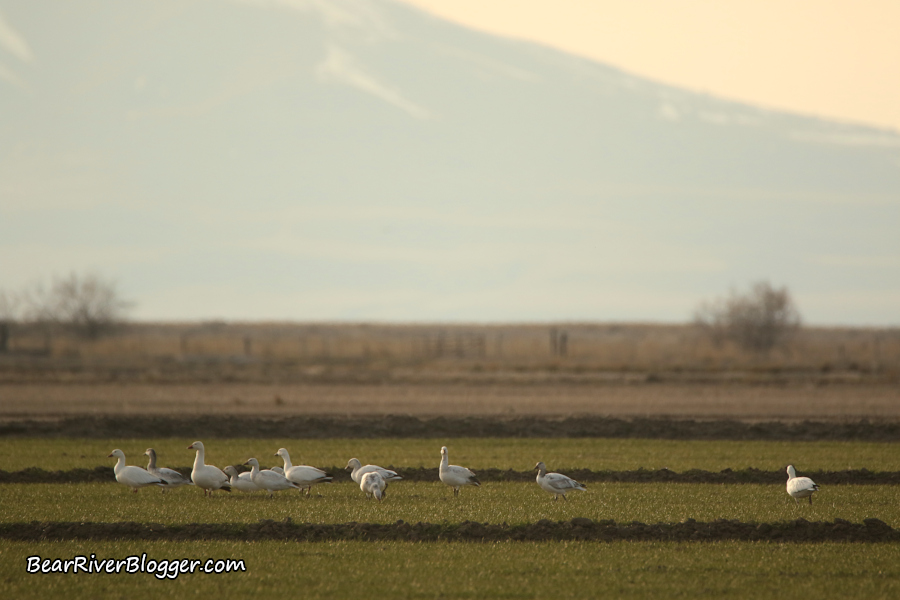
The snow geese took to the air about an hour and a half before sunset and, fortunately, they did pick a field that was fairly close to the roadway, however, the geese chose one that left me and my camera directly facing and photographing right into the sinking sun.
Initially, there was only a small handful of geese standing in the winter wheat field but it took only a few minutes more before the skyline was filled with hundreds and hundreds of geese on the wing, massive flocks all heading for the same field to feed in.
Before long I had countless snow geese swirling around and landing in the wheat field in front of me and this lasted for nearly half an hour or so, up to the point where the farmer arrived to chase the geese out of the winter wheat field, and rightfully so as now thousands of snow geese had already landed and feeding with more still on their way.
At first, I was quite disappointed with the only angle I could photograph the snow geese from as I stood on the side of the asphalt road and watched thousands of geese seemingly appear out of nowhere and land in the winter wheat field.
It wasn’t long before I noticed the increasing clouds started to take on a kind of golden hue as the sun sunk lower and lower towards the Promontory Mountains ridgeline, making for what I would say was a most spectacular scene with the setting sun, the thick clouds, and large flocks of geese still pouring in by the minute.
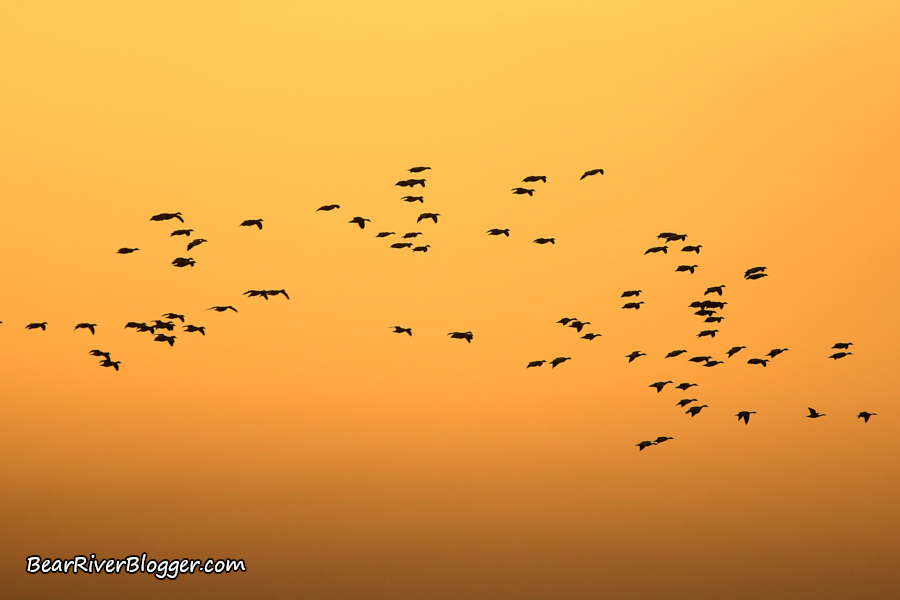
I tried to photograph the incoming geese with the setting sun backdrop as best as I could with what camera and lens combination I had with me at the time, literally just grabbing what was the quickest and easiest bird camera setup I had available as I bolted out the door.
Rarely do I try and photograph sunsets or landscape scenes with my Tamron 150-600mm lens as I prefer a wide-angle lens for that task and, despite the fact I had the wrong lens on my camera for sunsets, I think the images still turned out rather well but I’ll concede my own opinion and let you be the judge on that.
The majority of snow geese have now arrived in Box Elder County and should be around for a couple more weeks or so, depending on the weather that is.
I have seen the geese leave Corinne as early as late March and I have seen them stay well into the first part of April so it just depends on the weather, how warm and dry or how cold and wet the next few weeks are, but, either way, now is the time to come view the thousands of snow geese currently giving us birdwatchers a unique opportunity to get outdoors and enjoy the miracle of spring migration.
If you are like me, an avid bird photographer and birdwatcher, I offer you to head on over to our subscribe page and sign up for email notifications for future blog posts about our love for birds and nature as a whole.
For those that use social media outlets, we now have a Bear River Blogger Facebook page you can follow where we do quick updates and images regarding our birdwatching trips to the Bear River Migratory Bird Refuge, basically interesting tidbits too small to conjure up and write a complete blog post about.

